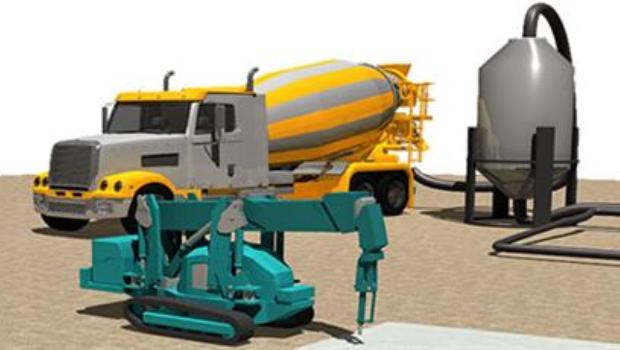Gradually yet surely, the development business is awakening to the chances of 3D printing. Particularly major solid 3D printing robots are, as of now demonstrating their value in an assortment of exploration ventures, with Chinese organization WinSun as of now 3D printing whole homes, condo and yards. Different organizations are taking action accordingly, and just a week ago Swiss development mammoth LafargeHolcim and French startup XtreeE effectively 3D printed Europe’s first basic component in cement.
While those are all exceptionally important achievements that make ready for 3D printed homes, office pieces and even scaffolds, these solid developments just concentrate on a solitary part of development. All things considered, structures are produced using significantly more than cement, and that is the reason Romanian organization Austrocasa International is applying those same solid 3D printing standards to other development materials, for example, dirt and pottery with their new RoboVAST 3D printer model. In time, different materials, (for example, reused wood and plastic) can be 3D imprinted on the same scale, making ready for totally 3D printed and manageable homes.
This idea became out of the startup’s own particular responsibility to maintainability. A Romanian organization situated in Iași, they are expanding on a plan of action that firmly depends on computerized displaying to develop homes and different structures utilizing eco-living materials, for example, wood, cellulose fiber, solid blend, dirt, and neighborhood reused materials. They began offering eco-inactive home packs produced using these materials in 2003, and customers from anyplace on the planet can present their outlines and inclinations before getting custom units.
3D printing is along these lines a legitimate next stride, and the Romanian designers consider it to be a flawless answer for the logistical issues that are inborn to the development business of today. “Development organizations lose cash because of administration issues, squandered materials, building delays, and the high cost of holding a qualified workforce. Engineers stress over constrained outline opportunity and whether their arrangements will be precisely executed on the development site,” they say. “On top of these issues, there are money related and logistical boundaries to lodging in numerous parts of the world. For some, quality lodging is cost-restrictive. For a few, building a reasonable home is unthinkable because of their remote area.”
These are issues that Austrocasa is trying to understand through 3D printing. Their RoboVAST 3D printer, they say, will furnish their clients with a phenomenal assortment in selecting house choices, models and shapes – while accelerating creation to keep costs as low as could be expected under the circumstances. “Our group has faith in giving high caliber and eco-accommodating homes at sensible costs,” they include. They will likewise be putting forth 3D printed Insulated Concrete Forms (ICFs) to supplant traditional ICFs.
The advantages are self-evident. For one thing, they are defeating the requirement for an excessive and exceedingly gifted development workforce that takes incalculable worker hours to finish a venture. Truth be told, they trust that they can undermine market costs by around 50 percent. In the meantime, the quality will continue as before or even enhance, giving a savvy lodging alternative that conveys unparalleled configuration opportunity to the table. In particular, they see their RoboVAST 3D printer as an ecologically mindful alternative too, as it breaking points material waste.
